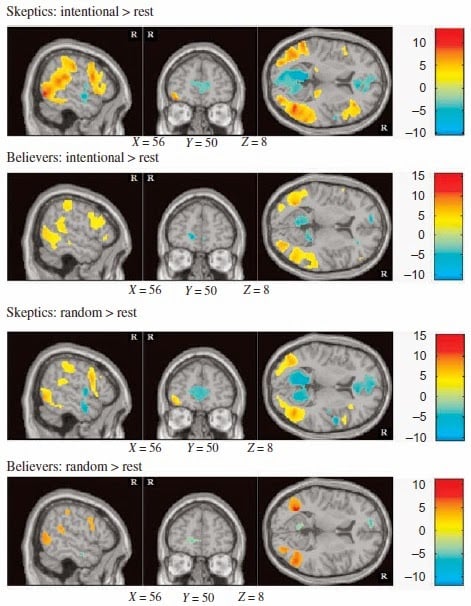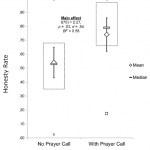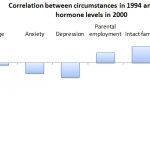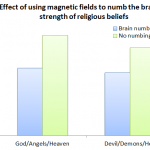“Theory of Mind” is the term used to describe the mental ability to put yourself inside the mind of someone else – to imagine what it is that they are thinking. Recently, there’s been some evidence that people who do not have a strong theory of mind are more likely to be atheists.
For example, studies have found that autistic-spectrum people are more likely to be non-believers, and maybe also atheists’ preferences for video games could be connected. The basic suggestion is that belief is a natural extension of our ability to recreate minds in our own head.
But it seems unlikely that atheists as a whole are weak at figuring out what others are thinking. Perhaps they just don’t fire up those mental circuits at inappropriate times. Which is what Tapani Riekki and Marjaana Lindeman (University of Helsinki), along with Tuukka Raij (Aalto University, Finland) wanted to investigate.
They took 12 believers and 11 sceptics and strapped them into an MRI machine to watch some animations.
These animations showed geometric shapes either moving randomly or acting with some kind of purpose towards each other. For example, they could be moving around as if they were children playing a game of tag.
Both groups tended to correctly rate the ‘intentional’ animations as having a purpose behind them, and tended to spot the random ones.
But believers were more likely to see purpose at work in both sets of animations – both intentional and random. You can see this at work in the brain scans. These show the brain circuits involved in Theory of Mind at work.
For the sceptics, watching the random animations drew a virtual blank , while the believers brains were firing away (the intense orange in the bottom image).
What was particularly interesting was when they contrasted brain activation in the two conditions. They found that for sceptics, Theory of Mind activation was stronger to intentional than to random movements, but for supernatural believers, this difference was missing and there was even a hint towards a reverse pattern.
The believers had a ‘hyperactive’ Theory of Mind.
What may have been going on is that, once they came to a belief that there was intention behind the movements, the believers may have begun searching to understand it – thus activating the neural circuits associated with the Theory of Mind.
All this suggests is that it’s not just ability to develop a Theory of Mind that’s linked to supernatural beliefs. Rather, what’s critical is the ability to apply it appropriately.
![]()
Riekki, T., Lindeman, M., & Raij, T. (2014). Supernatural believers attribute more intentions to random movement than skeptics: An fMRI study Social Neuroscience, 9 (4), 400-411 DOI: 10.1080/17470919.2014.906366
 This article by Tom Rees was first published on Epiphenom. It is licensed under Creative Commons.
This article by Tom Rees was first published on Epiphenom. It is licensed under Creative Commons.
















